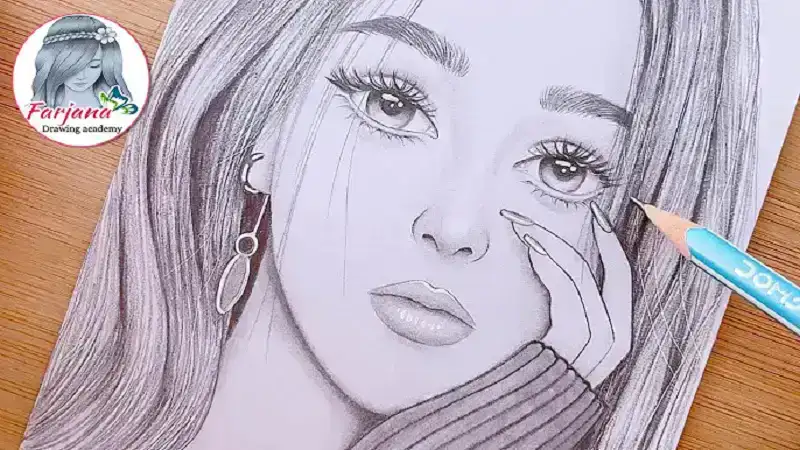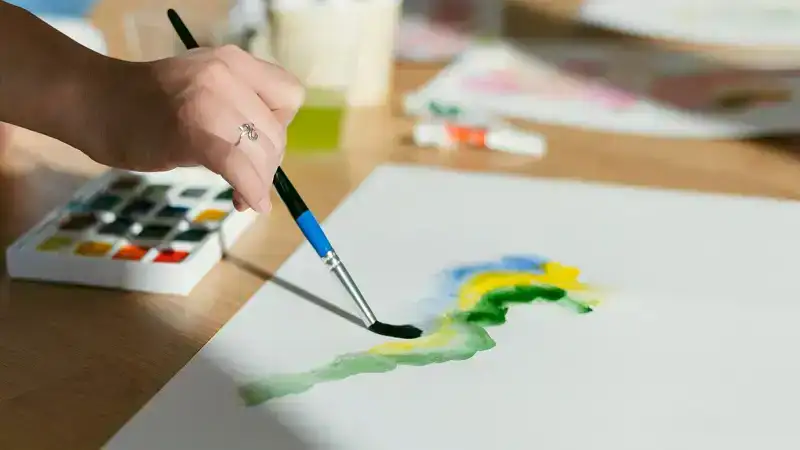Drawing is more than just a hobby—it’s a powerful tool for self-expression, creativity, and problem-solving. It helps improve hand-eye coordination, enhances observation skills, and encourages you to look at the world differently. With drawing:9_4wvkjg9zq= things to draw, you’ll always have new challenges to tackle, keeping your mind sharp and your skills progressing. By regularly practicing, you can unlock new creative pathways and enhance your overall artistic abilities. Beginners benefit from mastering the basics, while seasoned artists can use drawing to continually refine their techniques.
How Using a Drawing List Boosts Creativity
A drawing list can be a powerful ally when you’re stuck for ideas. It’s easy to fall into a creative rut, but a list of prompts like drawing:9_4wvkjg9zq= things to draw can help you break out of it by offering new subjects and themes you might not have considered. These prompts encourage experimentation, whether you’re sketching everyday objects or trying more imaginative concepts. Lists like these also ensure you’re always trying something new, pushing your skills beyond the usual comfort zone, and that’s where real artistic growth happens.
Basic Techniques to Improve Your Drawing Skills
Before you dive into drawing detailed compositions, it’s essential to have a grasp of the basics. These techniques will help you build a solid foundation:
- Lines and Shapes: Practice drawing straight lines, curves, circles, and squares. Getting comfortable with these basic forms will make it easier to create more complex drawings.
- Shading: Learn to shade using different techniques like hatching, cross-hatching, and stippling to add depth and texture to your work.
- Perspective: Mastering perspective allows you to draw in 3D, creating the illusion of depth on a flat surface.
These fundamental techniques are critical for tackling the ideas in drawing:9_4wvkjg9zq= things to draw and will improve your overall drawing ability.
Simple Things to Draw for Beginners
If you’re new to drawing, simplicity is key. Begin with basic concepts and progress from there.
Drawing Basic Shapes and Objects
Start with fundamental shapes like circles, triangles, and squares. These shapes are the building blocks of all drawings. Once you’re comfortable with these, try combining them into more complex forms like a snowman or a cube.
Doodling Everyday Items
Everyday objects, such as a cup of coffee, your favorite pen, or your phone, are perfect for beginners. These simple objects will help you improve your hand-eye coordination and understanding of proportion without being overwhelming.
Nature-Inspired Drawings
Nature is one of the most inspiring sources for artists. Drawing elements from nature can help you practice a wide range of techniques, from shading to detail work.
Trees, Leaves, and Flowers
Start by sketching trees, leaves, and flowers. Begin with the basic structure of the tree—draw the trunk, branches, and leaves. Flowers, with their unique shapes and delicate details, are excellent subjects for working on line quality and texture.
Animals in Motion
Drawing animals is a great way to practice capturing motion and form. Begin with simple animals like cats or birds, and once you’re comfortable, move on to more complex creatures like tigers or horses. Pay attention to the anatomy and flow of movement.
Sketching Scenic Landscapes
Landscapes provide an opportunity to practice perspective and composition. Start with a simple scene like a beach or a park. Try to capture the distance between objects by using shading techniques to differentiate between the foreground and background.
Intermediate Drawing Ideas to Explore
Once you’ve mastered the basics, it’s time to challenge yourself with more intricate drawings.
Mastering Still Life
Still life drawings are an excellent way to practice your observational skills. Set up a scene with objects like fruit, bottles, or books and try to capture them as accurately as possible. Focus on lighting, shadows, and texture to add depth and realism.
Drawing Human Portraits
Portraits are one of the most challenging subjects for artists. Start by learning how to draw facial features—eyes, noses, mouths—and then practice putting them together in proportion. Try drawing friends or family members, or even work from photographs.

Fantasy and Creative Drawing Prompts
Let your imagination take the wheel with these fantasy-based ideas that encourage creativity and innovation.
Imaginary Creatures and Beasts
Fantasy creatures like dragons, griffins, or fairies are exciting to draw because there are no rules! You can combine different elements from various animals to create a unique, fantastical beast. Experiment with wings, scales, or magical powers.
Developing Unique Characters
Character design is a fun way to express your creativity. Start by thinking about the character’s personality—are they a hero, a villain, or something in between? Then, sketch out their clothing, accessories, and expressions to reflect their unique traits.
Challenges to Inspire Your Next Drawing
Participating in drawing challenges can help you push your creative boundaries and keep you motivated.
Art Challenges Like Inktober
Inktober is a month-long challenge where artists create ink drawings every day based on a list of prompts. These challenges are great for practicing discipline and experimentation, as the prompts often push you out of your comfort zone.
Quick Timed Drawing Sessions
Timed drawing sessions are another excellent way to challenge yourself. Set a timer for 10 or 15 minutes and try to complete a drawing within that time limit. It forces you to focus on the essentials and improve your speed.
Advanced Drawing Techniques for Experts
For those with more experience, advanced techniques and complex compositions offer new opportunities for growth.
Understanding Perspective and Depth
Mastering perspective is essential for creating realistic and dynamic drawings. Practice drawing one-point, two-point, and three-point perspectives to create the illusion of depth in your artwork. Perspective drawing is especially useful for cityscapes or architectural scenes.
Drawing Full Scenes with Multiple Elements
Drawing an entire scene with multiple subjects—such as a busy marketplace or a bustling street—requires advanced skills in composition, perspective, and shading. Start by planning your scene with simple shapes, then gradually add detail to each element.
Maintaining Inspiration and Creativity in Daily Drawing
Drawing every day can be a challenge, but the key is consistency. Make a habit of setting aside time each day to draw, even if it’s just for a few minutes. Use prompts like drawing:9_4wvkjg9zq= things to draw to keep your ideas fresh and exciting. Don’t be afraid to experiment with different styles and techniques—sometimes stepping outside your comfort zone can lead to breakthroughs in your art.
Conclusion
Drawing is a dynamic and ever-evolving skill that allows you to express your thoughts, emotions, and imagination on paper. Whether you’re just starting out or have been sketching for years, having a guide like drawing:9_4wvkjg9zq= things to draw can help keep your inspiration alive. From doodling everyday objects to creating intricate scenes, there’s always something new to try. So, pick up your pencil and start drawing!
FAQs
1.What are some easy things to draw for beginners?
Simple shapes like circles, squares, and triangles are great for beginners. You can also start with everyday objects like a coffee mug, pen, or phone.
2.How can I improve my drawing skills quickly?
Practice regularly, focus on the basics like shapes and shading, and try using drawing prompts or lists to explore different ideas.
3.What are good nature-themed drawing ideas?
Trees, flowers, and animals are excellent nature-inspired drawing subjects. Landscapes also provide a great opportunity to practice perspective and composition.
4.How do I create unique fantasy characters?
Start by thinking about your character’s personality, then develop their appearance to reflect their traits. Experiment with different body shapes, clothing, and accessories to make them unique.
5.What the best way to practice drawing portraits?
Begin by learning to draw individual facial features like eyes, noses, and mouths. Once you’re comfortable with these, practice putting them together in proportion to create a full portrait.
